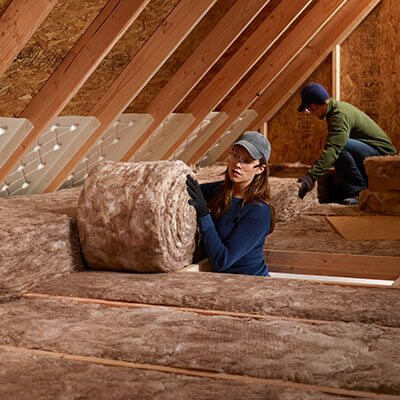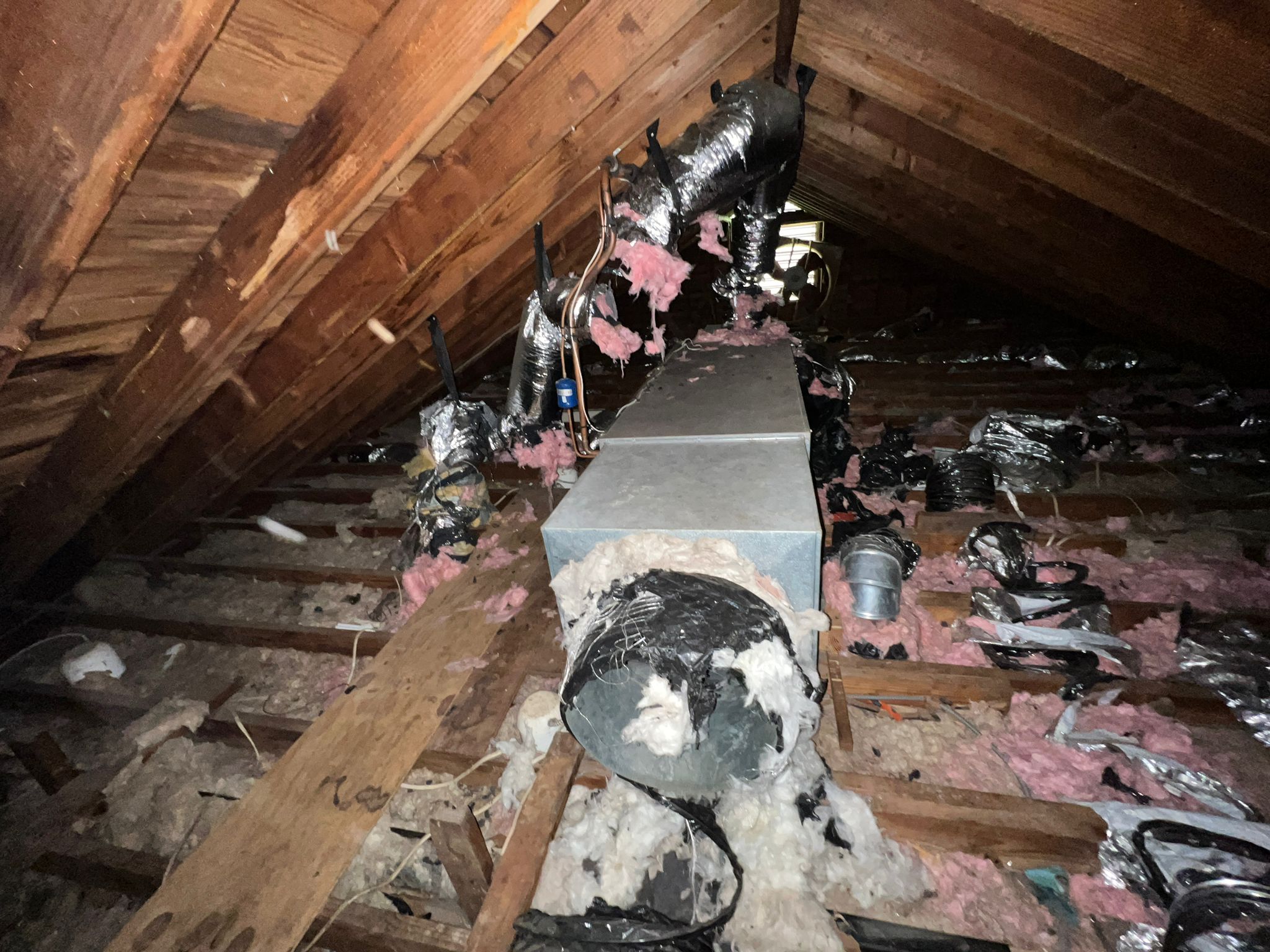The Ultimate Guide to Selecting the Right Attic Insulation DFW Provider
The Ultimate Guide to Selecting the Right Attic Insulation DFW Provider
Blog Article
Discover the Different Kinds Of Attic Insulation and Their Special Advantages for Your Home's Power Effectiveness

Fiberglass Insulation
Fiberglass insulation is one of the most generally used products for attic room insulation as a result of its superb thermal performance and cost-effectiveness. Composed of little glass fibers, this material properly traps air, developing an insulating barrier that aids maintain constant indoor temperatures. Its high R-value per inch makes it especially efficient at standing up to warmth transfer, which is essential for energy conservation in homes.
Installment of fiberglass insulation is fairly simple, frequently offered in batts or loose-fill forms, accommodating various attic configurations. In addition, it is resistant and non-combustible to moisture, decreasing the danger of mold growth. This sturdiness adds to its long life, making fiberglass a viable lasting investment for homeowners.
Moreover, fiberglass insulation is typically manufactured from recycled materials, which enhances its eco-friendliness. The material can likewise add to soundproofing, minimizing noise transfer between areas. While it is important to wear safety equipment throughout installment to stay clear of irritation from the fibers, the overall advantages of fiberglass insulation, including power cost savings and environmental factors to consider, make it a preferred choice for improving attic performance and promoting a comfy living environment.
Spray Foam Insulation
Spray foam insulation is an extremely reliable choice for attic room insulation, understood for its exceptional air sealing and thermal performance. This cutting-edge insulation material is made up of a mix of isocyanate and polyol material, which, when incorporated, expands swiftly to fill up voids and dental caries in the attic space. Its capability to comply with different surface areas makes sure a constant barrier versus air leaks, significantly decreasing heat loss during chillier months and heat gain during warmer seasons.
One of the key benefits of spray foam insulation is its high R-value per inch, which suggests it gives outstanding thermal resistance in a reasonably thin application. This is especially advantageous in attics where room is frequently limited. In addition, spray foam can aid reduce wetness accumulation, minimizing the threat of mold and mildew and mold development, which can be destructive to both the framework and interior air quality.
While the initial price of spray foam insulation might be higher than standard choices, its lasting energy savings, paired with increased convenience and boosted home worth, make it a worthwhile financial investment for house owners looking for boosted energy efficiency. Attic Insulation DFW. Generally, spray foam insulation attracts attention as an effective service for enhancing attic insulation
Cellulose Insulation

Cellulose insulation is a preferred selection for attic insulation, primarily made up of recycled paper items treated with fire resistants. This environmentally friendly alternative is recognized for its excellent thermal efficiency, effectively lowering warm transfer in both summer season and winter months. The thick structure of cellulose enables it to load spaces and voids in attic room rooms, giving a seamless obstacle against air leakages.
Among the considerable advantages of cellulose insulation is its capability to withstand mold and mildew and pests, owing to the fire retardant therapies utilized throughout production. In addition, it boasts a high R-value per inch, which equates right into remarkable energy efficiency. Property owners my website can expect lower cooling and heating expenses as a result of enhanced insulation.
Installment is usually completed with blowing loosened cellulose into the wanted area, enabling a quick and reliable procedure. This method additionally decreases interruption to the existing framework. Cellulose insulation has a relatively reduced environmental influence, as its production process uses recycled products, contributing to lasting structure practices.
Rock Woollen Insulation
Among the different alternatives for attic insulation, rock wool, additionally referred to as mineral woollen, attracts attention because of its remarkable thermal and acoustic efficiency. Made from natural or recycled materials, rock wool is created by melting rock and rotating it right into fibers, resulting in an item that supplies superb insulation homes.
Among the considerable advantages of rock wool insulation is its high R-value, which suggests its effectiveness in standing up to warm circulation. This characteristic not just boosts energy performance however also contributes to keeping a comfy interior temperature year-round. In addition, rock wool is inherently fire-resistant, making it a safer alternative for homes as it can hold up against high temperature levels without melting or launching hazardous fumes.
Moreover, rock wool insulation excels in soundproofing capacities, successfully reducing noise transmission in between spaces and from outdoors sources. This makes it an ideal selection for homeowners looking for a relaxed living atmosphere. Additionally, rock woollen is moisture-resistant, helping to prevent mold growth and preserving the structural stability of the attic room Homepage space. Generally, rock woollen insulation offers a thorough option for boosting energy efficiency, safety and security, and comfort in residential setups.
Glowing Barrier Insulation
Glowing obstacle insulation offers as an effective solution for decreasing warmth transfer in attic rooms, especially in warmer environments. This sort of insulation works by reflecting induction heat away from living spaces, therefore lowering the amount of warmth that gets in a home during heat - Attic Insulation DFW. Normally composed of an extremely reflective product, such as aluminum foil, radiant obstacles are installed in attics, encountering the roof, where they can obstruct incoming heat from the sunlight
The key advantage of radiant barrier insulation is its capacity to reduced cooling expenses. By showing warmth instead of absorbing it, glowing barriers can help preserve a more secure interior temperature, decreasing the workload on a/c systems. This performance equates into lower energy expenses and boosted convenience for home owners.
Along with energy savings, radiant obstacles can additionally contribute to boosted interior air top quality. By reducing warm accumulation, they assist minimize humidity degrees, which can protect against mold growth and enhance total air blood circulation. When installed appropriately, radiant obstacle insulation can be a vital enhancement to any kind of energy-efficient home, making it a deserving this link consideration for home owners aiming to enhance their attic room insulation technique.
Conclusion
In conclusion, understanding the various kinds of attic room insulation-- fiberglass, spray foam, cellulose, rock wool, and glowing barriers-- allows property owners to make informed choices concerning energy effectiveness. By selecting the appropriate insulation product, considerable reductions in energy costs can be accomplished, along with enhancements in indoor convenience.

In final thought, recognizing the various types of attic room insulation-- fiberglass, spray foam, cellulose, rock woollen, and glowing obstacles-- allows property owners to make enlightened decisions concerning energy effectiveness.
Report this page